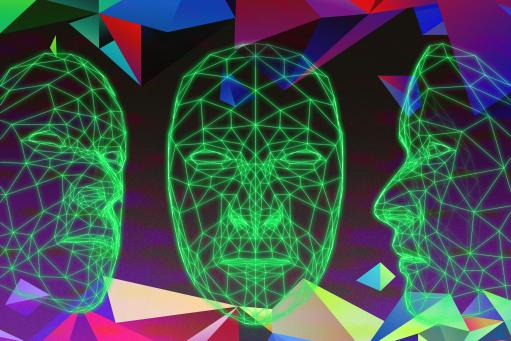Many scholars, analysts, and other observers have suggested that resistance to innovation is an Achilles’ heel of authoritarian regimes. Such governments can fail to keep up with technological changes that help their opponents; they may also, by stifling rights, inhibit innovative economic activity and weaken the long-term condition of the country.
But a new study co-led by an MIT professor suggests something quite different. In China, the research finds, the government has increasingly deployed AI-driven facial-recognition technology to suppress dissent; has been successful at limiting protest; and in the process, has spurred the development of better AI-based facial-recognition tools and other forms of software.
“What we found is that in regions of China where there is more unrest, that leads to greater government procurement of facial-recognition AI, subsequently, by local government units such as municipal police departments,” says MIT economist Martin Beraja, who is co-author of a new paper detailing the findings.
What follows, as the paper notes, is that “AI innovation entrenches the regime, and the regime’s investment in AI for political control stimulates further frontier innovation.”
The scholars call this state of affairs an “AI-tocracy,” describing the connected cycle in which increased deployment of the AI-driven technology quells dissent while also boosting the country’s innovation capacity.
The open-access paper, also called “AI-tocracy,” appears in the August issue of the Quarterly Journal of Economics. The co-authors are Beraja, who is the Pentti Kouri Career Development Associate Professor of Economics at MIT; Andrew Kao, a doctoral candidate in economics at Harvard University; David Yang, a professor of economics at Harvard; and Noam Yuchtman, a professor of management at the London School of Economics.
To conduct the study, the scholars drew on multiple kinds of evidence spanning much of the last decade. To catalogue instances of political unrest in China, they used data from the Global Database of Events, Language, and Tone (GDELT) Project, which records news feeds globally. The team turned up 9,267 incidents of unrest between 2014 and 2020.
The researchers then examined records of almost 3 million procurement contracts issued by the Chinese government between 2013 and 2019, from a database maintained by China’s Ministry of Finance. They found that local governments’ procurement of facial-recognition AI services and complementary public security tools — high-resolution video cameras — jumped significantly in the quarter following an episode of public unrest in that area.
Given that Chinese government officials were clearly responding to public dissent activities by ramping up on facial-recognition technology, the researchers then examined a follow-up question: Did this approach work to suppress dissent?
The scholars believe that it did, although as they note in the paper, they “cannot directly estimate the effect” of the technology on political unrest. But as one way of getting at that question, they studied the relationship between weather and political unrest in different areas of China. Certain weather conditions are conducive to political unrest. But in prefectures in China that had already invested heavily in facial-recognition technology, such weather conditions are less conducive to unrest compared to prefectures that had not made the same investments.
In so doing, the researchers also accounted for issues such as whether or not greater relative wealth levels in some areas might have produced larger investments in AI-driven technologies regardless of protest patterns. However, the scholars still reached the same conclusion: Facial-recognition technology was being deployed in response to past protests, and then reducing further protest levels.
“It suggests that the technology is effective in chilling unrest,” Beraja says.
Finally, the research team studied the effects of increased AI demand on China’s technology sector and found the government’s greater use of facial-recognition tools appears to be driving the country’s tech sector forward. For instance, firms that are granted procurement contracts for facial-recognition technologies subsequently produce about 49 percent more software products in the two years after gaining the government contract than they had beforehand.
“We examine if this leads to greater innovation by facial-recognition AI firms, and indeed it does,” Beraja says.
Such data — from China’s Ministry of Industry and Information Technology — also indicates that AI-driven tools are not necessarily “crowding out” other kinds of high-tech innovation.
Adding it all up, the case of China indicates how autocratic governments can potentially reach a near-equilibrium state in which their political power is enhanced, rather than upended, when they harness technological advances.
“In this age of AI, when the technologies not only generate growth but are also technologies of repression, they can be very useful” to authoritarian regimes, Beraja says.
The finding also bears on larger questions about forms of government and economic growth. A significant body of scholarly research shows that rights-granting democratic institutions do generate greater economic growth over time, in part by creating better conditions for technological innovation. Beraja notes that the current study does not contradict those earlier findings, but in examining the effects of AI in use, it does identify one avenue through which authoritarian governments can generate more growth than they otherwise would have.
“This may lead to cases where more autocratic institutions develop side by side with growth,” Beraja adds.
Other experts in the societal applications of AI say the paper makes a valuable contribution to the field.
“This is an excellent and important paper that improves our understanding of the interaction between technology, economic success, and political power,” says Avi Goldfarb, the Rotman Chair in Artificial Intelligence and Healthcare and a professor of marketing at the Rotman School of Management at the University of Toronto. “The paper documents a positive feedback loop between the use of AI facial-recognition technology to monitor suppress local unrest in China and the development and training of AI models. This paper is pioneering research in AI and political economy. As AI diffuses, I expect this research area to grow in importance.”
For their part, the scholars are continuing to work on related aspects of this issue. One forthcoming paper of theirs examines the extent to which China is exporting advanced facial-recognition technologies around the world — highlighting a mechanism through which government repression could grow globally.
Support for the research was provided in part by the U.S. National Science Foundation Graduate Research Fellowship Program; the Harvard Data Science Initiative; and the British Academy’s Global Professorships program.


